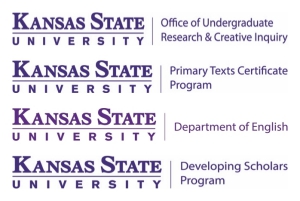Title
Degradation of BAPCs by Fungi
Student Major/Year in School
Biochemistry, fourth year
Faculty Mentor Information
Dr. John Tomich, Biochemistry and Molecular Biophysics, Kansas State University and Richard Todd, Plant Pathology, Kansas State University
Abstract
Transporting active ingredients (AIs) into cells has been an active area of research because cell membranes typically keep out synthetic materials that scientists are looking to deliver. Branched Amphiphilic Peptide Capsules (BAPCs) have proved to be an efficient method for encapsulating and delivering AIs into cells. These could be used to transport biocides, drugs, and nucleic acids for genetic transformations. These nanoparticles have been seen to be rapidly taken up into cells. However, before my research they had not been found to be broken open to release the AI by any eukaryotic cells. Pictures have been collected which show that the fungus Aspergillus nidulans is able to take up and break down these nanoparticles with encapsulated dye. Experiments have since been designed to optimize delivery of fungicides to the fungal species. Growth inhibition on fungal plates shows that BAPCs can deliver the fungicide thiourea and that Aspergillus has the capability to break down the capsules. It can now be said that BAPCs are biodegradable, which is important because the long-term effects of nanoparticle accumulation in the environment are unknown. The protease responsible for BAPC degradation is now being sought after in hope of isolation and purification. This enzyme could be encapsulated to release the AI in species that can’t break down BAPCs on their own. These nanoparticle capsules will also be tested with other fungal species and fungicides. Initial signs have shown that Aspergillus is capable of BAPC degradation, but more data is being collected to support this conclusion.
Recommended Citation
Wessel, Emily (2019). "Degradation of BAPCs by Fungi," Kansas State University Undergraduate Research Conference.
Degradation of BAPCs by Fungi
Transporting active ingredients (AIs) into cells has been an active area of research because cell membranes typically keep out synthetic materials that scientists are looking to deliver. Branched Amphiphilic Peptide Capsules (BAPCs) have proved to be an efficient method for encapsulating and delivering AIs into cells. These could be used to transport biocides, drugs, and nucleic acids for genetic transformations. These nanoparticles have been seen to be rapidly taken up into cells. However, before my research they had not been found to be broken open to release the AI by any eukaryotic cells. Pictures have been collected which show that the fungus Aspergillus nidulans is able to take up and break down these nanoparticles with encapsulated dye. Experiments have since been designed to optimize delivery of fungicides to the fungal species. Growth inhibition on fungal plates shows that BAPCs can deliver the fungicide thiourea and that Aspergillus has the capability to break down the capsules. It can now be said that BAPCs are biodegradable, which is important because the long-term effects of nanoparticle accumulation in the environment are unknown. The protease responsible for BAPC degradation is now being sought after in hope of isolation and purification. This enzyme could be encapsulated to release the AI in species that can’t break down BAPCs on their own. These nanoparticle capsules will also be tested with other fungal species and fungicides. Initial signs have shown that Aspergillus is capable of BAPC degradation, but more data is being collected to support this conclusion.


